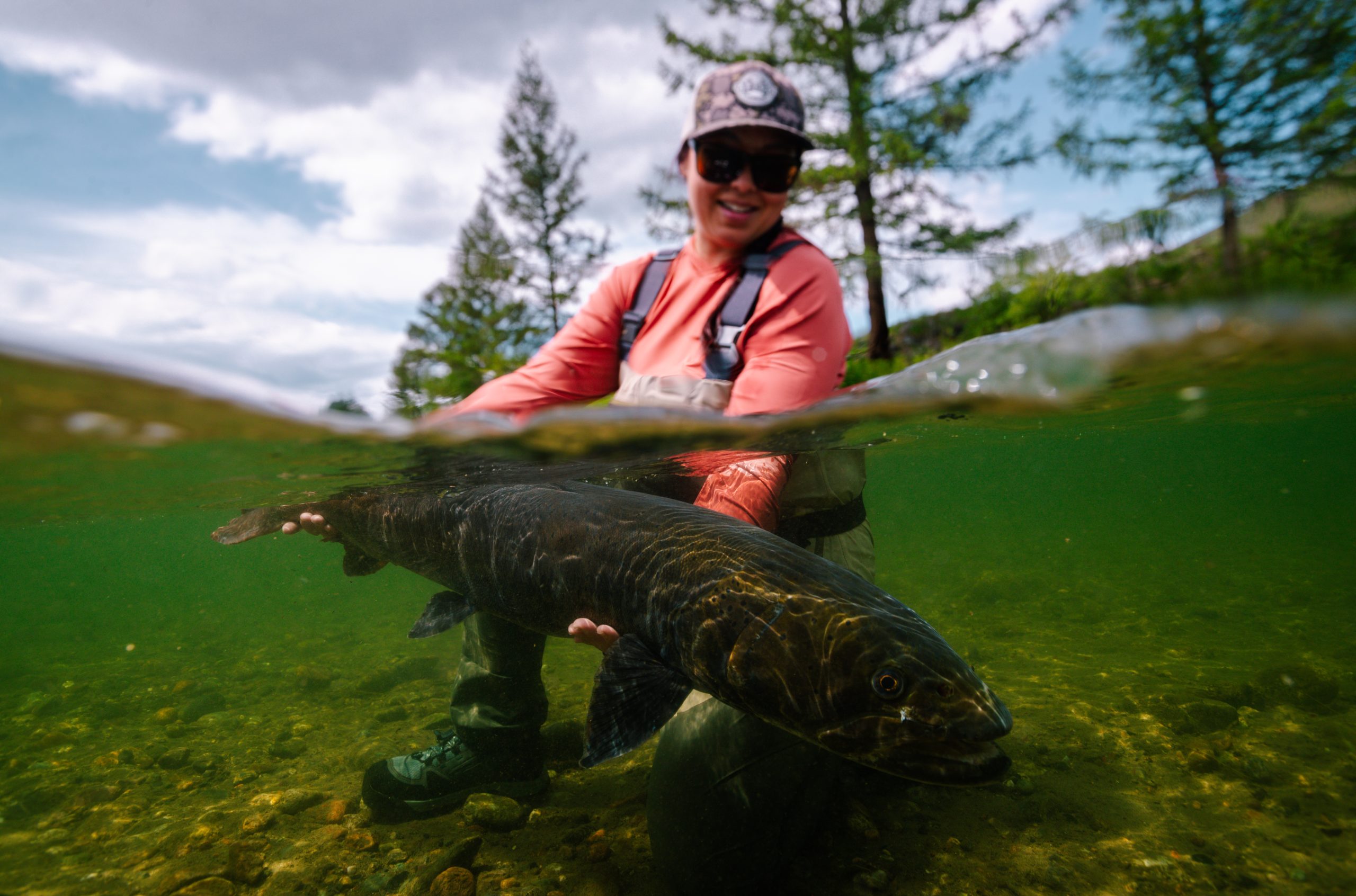The legendary taimen, often called the River Wolf, is the apex predator of Mongolia’s pristine northern rivers. It is the world’s largest salmonid, a fish of mythic power, capable of smashing a fly on the surface like thunder and running deep into the current with unstoppable strength.
- Scientific name: Hucho taimen
- Average size: 80–100 cm (32–40 in)
- Trophies: Fish exceeding 120–150 cm (50–60 in) are possible on the Shishged and Tengis River
- Lifespan: 25–40 years — true river guardians of Mongolia’s wilderness
- Diet: Opportunistic predators feeding on lenok, grayling, voles, ducks, and even small muskrats
Habitat in the Tengis River
The Tengis–Shishged system provides clear, cold, oxygen-rich rivers flowing through endless forested valleys.
Taimen prefer:
- Deep pools and undercut banks with structure (boulders, fallen trees)
- Tailouts and current seams where prey is funneled
- Fast runs and confluences, especially during dusk and dawn when they hunt actively
During early summer, taimen are highly territorial. As water levels drop in midsummer, they concentrate in deeper holding pools — a perfect scenario for sight-casting or floating expeditions.
Fly Fishing for Taimen
Fly fishing for taimen is unlike any other freshwater pursuit — it’s big, visual, and explosive.
- Rod: 8–9 wt single-hand or switch rod (occasionally 10 wt for heavy flies)
- Line: Floating or sink-tip; short aggressive tapers for big streamers
- Flies:
- Surface: Mouse patterns (Mr. Hankey, Morrish Mouse, Taimen Terror)
- Subsurface: Large streamers (Double Bunny, Deceiver, articulated patterns, Intruders)
- Tippet: 40–60 lb fluorocarbon leader
- Technique:
- Swing, strip, and pause — taimen often strike on the pause
- Cast across the current, let the fly swim just below the surface
- Use mouse patterns on calm evenings — taimen will explode from the depths to crush them
There’s nothing in fly fishing like a taimen take — a violent, heart-stopping eruption followed by a long, relentless battle.
Spin Fishing for Taimen
For spin anglers, taimen are the ultimate predator. The thrill of seeing a massive red-finned shape chase down a lure in clear water is unforgettable.
- Rod: Medium-heavy to heavy spinning rod (7’–9’) with strong backbone
- Reel: 4000–5000 size reel with a smooth drag
- Line: 40–50 lb braid or 0.35–0.45 mm heavy monofilament
- Leaders: Steel or fluorocarbon shock leader (40–50 lb)
- Lures:
- Large spoons (Abu Garcia Toby 28–40 g, Mepps Syclops, Blue Fox Super Vibrax #5–6)
- Big spinners, minnow plugs, and soft swimbaits (Rapala X-Rap, Savage Gear Roach, Yo-Zuri Crystal Minnow)
- Jointed lures or surface plugs for visual strikes in calm pools
- Technique:
- Cast across current and retrieve steadily with pauses
- Focus on confluences, log jams, and tailouts at dawn and dusk
- In colder water, use slow, deep presentations
At Taimen Lodge
Catching a taimen on the Tengis and Shishged Rivers are more than a fishing experience — it’s a rite of passage. Each season, Taimen Lodge guests have the chance to pursue these legendary fish in some of the most pristine waters on Earth, under Mongolia’s endless northern skies.
Whether you prefer the surface violence of a mouse fly or the deep pull of a heavy spoon, every encounter with taimen is unforgettable — a rare meeting with one of the planet’s most powerful freshwater predators.
“You don’t just catch a taimen — you earn its respect.”






